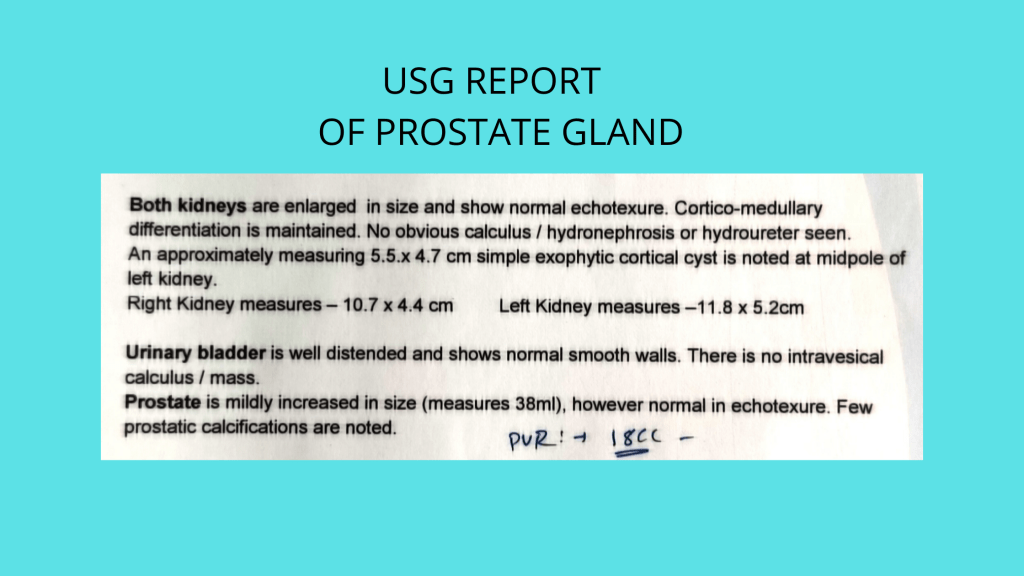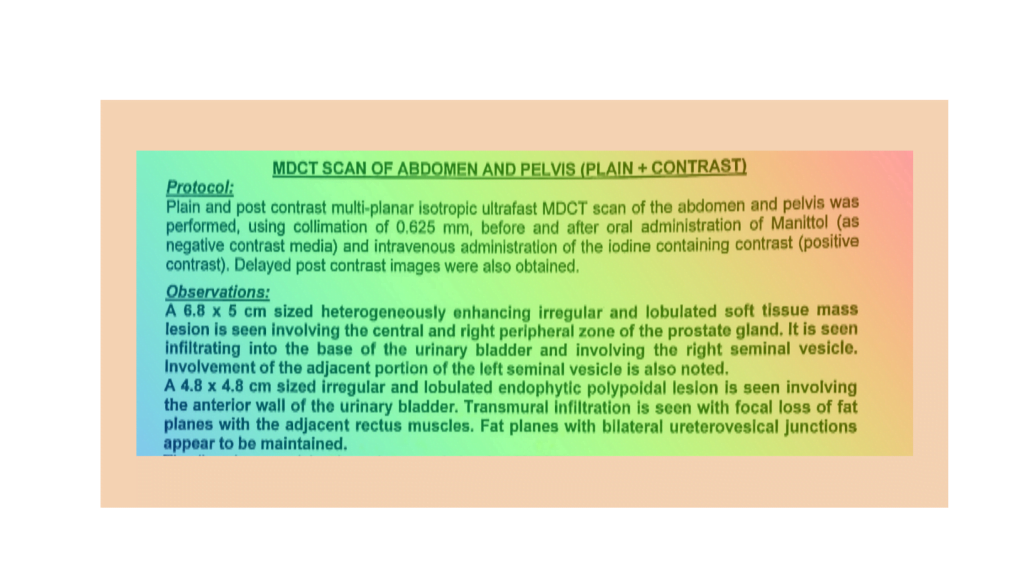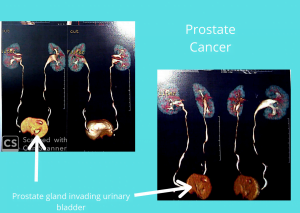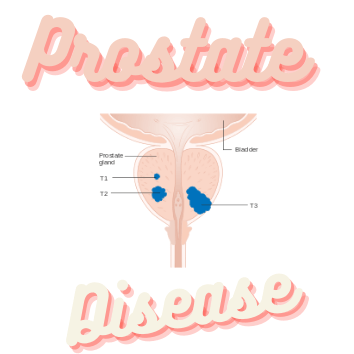How to have a Healthy Prostate and Live a Good Life
 Introduction-
Introduction-
The Prostate gland is a gland present in all men and its disease is very common as we grow old or simply put- when we age.
Many of the elderly men, especially those in their 50s and 60s, must have gone through prostate problems and may still be under treatment currently.
Listen to this article
Why am I writing this article?
Exactly one and a half years ago, I had problems with urination. I am now 65 years old and the symptoms like frequent and scanty urination suggested to me that I may be going in for Prostate disease.
After ruling out urinary tract infection, I got my Ultrasonography Scan[USG] done, and lo!-it suggested I had mild enlargement of prostate gland.
Now, if you like to hear about than read, listen to this audio clip that I made for you-
Case studies-
All the examples quoted in this article are true-life descriptions of the patients to whom I have attended in my clinic. [These examples will be included in each type of Prostate Disease which I will be discussing] However, the names of the patients in these case studies have not been revealed for the sake of privacy.
Moreover, I will be showing only the relevant part of the investigation reports so that you can focus on that part only if you are being investigated for prostate problems.
My suggestion is that you should read till the end because in the end, I have included some interesting podcasts which I believe you should listen to.
So, what did I do next?
As you all know, I am a General Medical Practitioner-I could have still treated myself- but I still consulted my Urologist colleague and started the treatment. With this treatment, I am doing fine to-date.
This experience and an ever-increasing number of patients visiting my Clinic gave me the idea that I should teach my patients about Prostate Problems.
Reading this article will give you sufficient knowledge of its disease so that you can discuss it with your Doctor while seeking treatment.
After reading this article, kindly bookmark it for future reference.
What is the Prostate Gland?
Just have a look at the picture shown on your right to know how a prostate looks like and where it is placed in the body.

It is a gland the size of walnut[looks like walnut too] below the bladder covering the part of the urethra[through which the urines flows out] adjoining the bladder.
What is Prostate Disease?
Any disease affecting the prostate gland is called prostate disease. There are 3 main diseases affecting the gland, namely:-
- Prostatitis
- Benign Prostate Hyperplasia
- Prostate Cancer
Now let us try to understand each disease one by one-
Prostatitis-
In this condition, there is an acute infection of the gland. This occurs mostly in a sexually active patient i.e. in the age range 20 to 50 years of age. I will explain the signs and symptoms of such a patient with an example-
Case study 1-
A 35-year-old patient visited my Clinic complaining of –
- Frequency-that is repeated call for urination, especially at night.
- Dysuria- that is a burning sensation while passing urine
- Painful urination-especially at the end. The patient feels said his urination is not complete, so waits for some time till the last drop
- Fever with chills-usually mild.
Investigations-
The patient was advised to do the following investigations-
- Complete Blood checkup[CBC}- This showed a rise in the neutrophil counts.
- Urine microscopic and routine- This showed the presence of pus cells, red blood cells[RBC], increased level of albumin[protein]
Treatment-
This patient was advised-
- Antibiotics- A combination of Norfloxacin and Metronidazole[Nor-metrogyl] was prescribed to reduce infection
- An anti-inflammatory drug combination of diclofenac sodium and serratiopeptidase[Emanzen-D] to reduce swelling of prostate and pain
- Tamasulin[Urimax]0.4mg-to reduce irritation of the bladder due to the prostate inflammation. This is short term therapy usually for 10 days.
- Paracetamol to reduce fever.
This patient recovered fully after 10 days of treatment.
Tips for prevention-
- Do not masturbate frequently, that is, say more than once a day.
- After intercourse, wash your genitals immediately, not the next day. Semen contains lots of sugar in it-this can invite unwanted infections that can lead to prostatitis.
Benign Prostatic Hyperplasia[BPH]-
Have a look at the illustration shown below-

It shows a uniform enlargement of the gland compressing the urethra. This is a problem that occurs with-
- Aging -usually, the patients are in the range of 50 years and above.
- Reduced sexual desire
- Hyperactive sexual activity in some elderly patients
- The decrease in the hormone testosterone.
I will now explain the disease by an example.
Case study 2-
A 55-year-old male patient visited my clinic with –
- Frequent urination, especially at night leading to disturbed sleep
- Pain below the navel-possibly due to distended bladder
- Burning sensation while passing urine-probably due to infection of urine.
- Slightly reddish urine-probably due to the passing of RBCs in the urine.
- Mild fever with chills and body ache.
[The last 2 symptoms will be reflected in the Urine lab test]
Investigations-
This patient was advised –
A] Urine routine and microscopic test[see the report below]

This report shows the presence of 25 to 30 pus cells indicating severe urine infection.
B] Complete Blood Checkup-
This report shows an increase in WBC counts again indicating the cause of fever due to a possible infection of the prostate.

C] Ultrasonography-
The report show enlargement of the prostate gland[see below]

Notice the size of the gland- it is 38ml. The normal range is 18 to 23 ml. This again suggests its enlargement -medically termed as Benign Prostatic Hyperplasia or simply BPH.
Other noticeable changes in the USG are enlargement of both kidneys and a cystic growth in the left kidney. These are not related to BPH.
D] Prostate-Specific Antigen[PSA] test-

This came out to be normal. The normal values range from 0-6. An increase in the value of PSA is indicative of Prostate Cancer. The normal range of PSA levels as per age is as given below-
You can also listen to this podcast to learn more about the PSA Test –http://prostatenet.com/DrIsaacPowell_200805.mp3
Treatment-
I treated this patient with the following medicines-
- Nitrofurantoin tablets[Niftas 100 mg] twice daily for 10 days. This is to clear the urinary infection.
- Urinary alkaliser[Cital UTI]- 10 ml in 1 glass water to reduce the acidity of the urine. This took care of the burning sensation while urinating.
- Tamsulosin 0.4 mg -once a day at night for at least 3 months. This was to reduce the size of the prostate gland[Prostatomegaly as seen in the USG report]. Treatment will be reviewed after fresh USG reports post 3 months.
- Combination of paracetamol and nimesulide[Sumo Plus]-to reduce fever and body-ache.
This patient has recovered almost fully and is free of symptoms at present.
This was my line of treatment for that particular patient. If you are facing this particular prostate problem, seek the advice of your family physician-he will be the right person to guide you.
Tips for Prevention-
- As this disease occurs during the 40s and 50s, there is a gradual decline of testosterone hormone and sexual desire. Having regular sex can help increase the level of this hormone and slow down prostate enlargement.
- Do not over-masturbate at these age levels.
Here are some tips to overcome BPH- Click here
Prostate Cancer-
This is the disease of people aged 60 years and above. In some of these patients, the prostate is so enlarged sometimes that one may not be able to operate it.
Types of Prostate Cancer-
There are many types of prostatic cancers. I may not be able to cover the details of all these cancers as it is beyond the scope of this article.
However, I will present a snippet of a few common ones-Click here to know more.
Now I will place the signs, symptoms, and investigation details of one of my patients in the following example.
Case study 3-
An 87-year-old male patient visited my clinic with the following complaints-
Signs and symptoms-
- Difficulty in urination and frequent visits to the washroom
- Passing of blood clots in urine
- Past history of being treated for prostate problems
Investigations-
- Urine routine and microscopic- This showed plenty of red blood cells and a few pus cells.
- Ultrasonography-This picture was presented by the USG Report-


The Prostate-specific antigen value has come 25 times more than normal suggesting advanced cancer of the gland.

Shown below is the actual MDCT scan picture of the same patient-

I referred this case to a Urologist for further treatment. here is what he suggested-
- Bone Scan- to rule out metastasis[spread] of cancer to the bone.
- Transurethral biopsy of the prostate
- ECG and Echocardiography.
- chest X-ray- to rule out the spread of cancer to the lungs.
The patient is currently undergoing investigations and treatment for his symptoms. Depending upon the results of the biopsy of the prostate, further treatment like removal of the cancerous growth will be considered.
The Biopsy report-
The biopsy report came out to be adenocarcinoma of the prostate gland. As a part of the treatment, to slow down the progress of cancer, his testicles were removed. According to the operating surgeon, this type of cancer spreads fast due to excess testosterone hormone released by the testicle.
For more about preventing prostate cancer or what one should do about it, listen to this podcast
Conclusion
Dear friends, I get inspiration to write articles by reading articles written by other authors, reading health-related books on Kindle for Amazon, and watching good health serials on Amazon Prime Video. At present, I am watching The Good Doctor on Amazon Prime Video. If you are interested, you can get it all here-
I hope this article will help you make an informed decision when it comes when confronted with prostate problems any time in the future.
I would appreciate it if I could know how useful this article has been to you by placing a comment or suggestion in the comments section below.
Share this Article
I would also appreciate even more it if you could spread this knowledge you have acquired by sharing it on social media like Twitter, Linkedin, Whatsapp. You can find these icons at the bottom of this article.
Alternately, you can click on the quote given below-
Knowledge Shared is like Knowledge Earned-Come Let's Fight the Prostate disease with this knowledge Share on X

 Introduction-
Introduction-